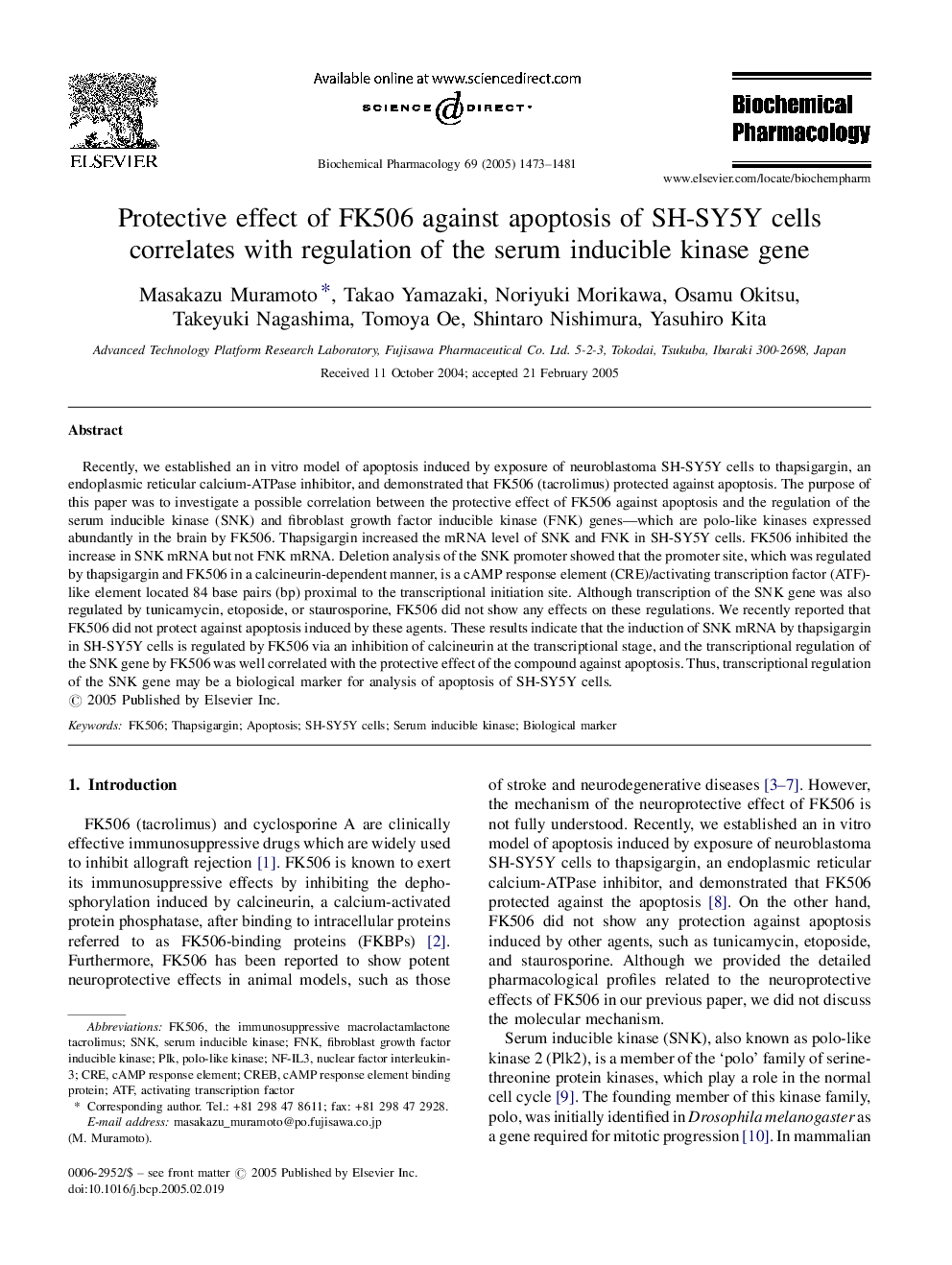| Article ID | Journal | Published Year | Pages | File Type |
|---|---|---|---|---|
| 9001661 | Biochemical Pharmacology | 2005 | 9 Pages |
Abstract
Recently, we established an in vitro model of apoptosis induced by exposure of neuroblastoma SH-SY5Y cells to thapsigargin, an endoplasmic reticular calcium-ATPase inhibitor, and demonstrated that FK506 (tacrolimus) protected against apoptosis. The purpose of this paper was to investigate a possible correlation between the protective effect of FK506 against apoptosis and the regulation of the serum inducible kinase (SNK) and fibroblast growth factor inducible kinase (FNK) genes-which are polo-like kinases expressed abundantly in the brain by FK506. Thapsigargin increased the mRNA level of SNK and FNK in SH-SY5Y cells. FK506 inhibited the increase in SNK mRNA but not FNK mRNA. Deletion analysis of the SNK promoter showed that the promoter site, which was regulated by thapsigargin and FK506 in a calcineurin-dependent manner, is a cAMP response element (CRE)/activating transcription factor (ATF)-like element located 84 base pairs (bp) proximal to the transcriptional initiation site. Although transcription of the SNK gene was also regulated by tunicamycin, etoposide, or staurosporine, FK506 did not show any effects on these regulations. We recently reported that FK506 did not protect against apoptosis induced by these agents. These results indicate that the induction of SNK mRNA by thapsigargin in SH-SY5Y cells is regulated by FK506 via an inhibition of calcineurin at the transcriptional stage, and the transcriptional regulation of the SNK gene by FK506 was well correlated with the protective effect of the compound against apoptosis. Thus, transcriptional regulation of the SNK gene may be a biological marker for analysis of apoptosis of SH-SY5Y cells.
Keywords
Related Topics
Health Sciences
Pharmacology, Toxicology and Pharmaceutical Science
Pharmacology
Authors
Masakazu Muramoto, Takao Yamazaki, Noriyuki Morikawa, Osamu Okitsu, Takeyuki Nagashima, Tomoya Oe, Shintaro Nishimura, Yasuhiro Kita,
